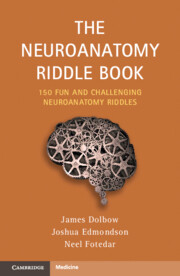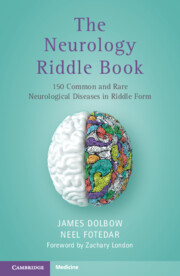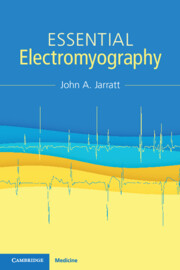Refine search
Actions for selected content:
96 results
Chapter 7 - Multidisciplinarity in Psychiatry
- from Part II - The Present and the Future
-
-
- Book:
- Values in Psychiatry
- Published online:
- 24 June 2025
- Print publication:
- 10 July 2025, pp 106-123
-
- Chapter
- Export citation
Chapter 42 - Management of Head Injuries
- from Section 4 - Walking the Walk (and Talking the Talk)
-
- Book:
- Robinson and Hall's How to Survive in Anaesthesia
- Published online:
- 09 June 2025
- Print publication:
- 26 June 2025, pp 233-236
-
- Chapter
- Export citation
The saccule and gravity
-
- Journal:
- The Journal of Laryngology & Otology / Volume 139 / Issue 8 / August 2025
- Published online by Cambridge University Press:
- 23 June 2025, pp. 718-722
- Print publication:
- August 2025
-
- Article
- Export citation
Chapter 1 - A Historical Account of the Neurology of Breathing
-
-
- Book:
- Clinical Neurorespiratory Medicine
- Published online:
- 26 May 2025
- Print publication:
- 19 June 2025, pp 1-18
-
- Chapter
- Export citation
Chapter 12 - Tracheotomy and Tracheal Cannulas in Neurologic Disease
-
-
- Book:
- Clinical Neurorespiratory Medicine
- Published online:
- 26 May 2025
- Print publication:
- 19 June 2025, pp 137-148
-
- Chapter
- Export citation
Prologue
-
- Book:
- Disorderly Movements
- Published online:
- 17 May 2025
- Print publication:
- 05 June 2025, pp 1-10
-
- Chapter
- Export citation
Motor Disorder in Psychiatry: Towards a Neurological Approach, by Daniel Rogers
- Part of
-
- Journal:
- BJPsych Advances , FirstView
- Published online by Cambridge University Press:
- 10 April 2025, pp. 1-3
-
- Article
- Export citation
Neuropsychiatry as a paradigm propelling neurology and psychiatry into the future
-
- Journal:
- BJPsych Open / Volume 11 / Issue 2 / March 2025
- Published online by Cambridge University Press:
- 03 March 2025, e38
-
- Article
-
- You have access
- Open access
- HTML
- Export citation
Ages and Stages Questionnaires in the assessment of young children after cardiac surgery
-
- Journal:
- Cardiology in the Young / Volume 35 / Issue 1 / January 2025
- Published online by Cambridge University Press:
- 20 December 2024, pp. 144-151
-
- Article
-
- You have access
- Open access
- HTML
- Export citation

The Neuroanatomy Riddle Book
- 150 Fun and Challenging Neuroanatomy Riddles
-
- Published online:
- 22 November 2024
- Print publication:
- 12 December 2024

The Neurology Riddle Book
- 150 Common and Rare Neurological Diseases in Riddle Form
-
- Published online:
- 21 November 2024
- Print publication:
- 05 December 2024
Unravelling Stendhal syndrome: the intersection of art, emotion and neuroscience
- Part of
-
- Journal:
- The British Journal of Psychiatry / Volume 225 / Issue 5 / November 2024
- Published online by Cambridge University Press:
- 11 December 2024, pp. 473-475
- Print publication:
- November 2024
-
- Article
- Export citation
Settling the dispute of Romantic composer Bedřich Smetana’s neurological deterioration
-
- Journal:
- The Journal of Laryngology & Otology / Volume 139 / Issue 4 / April 2025
- Published online by Cambridge University Press:
- 30 October 2024, pp. 254-257
- Print publication:
- April 2025
-
- Article
- Export citation
Chapter 5 - Neuropsychiatric Perspectives on the Biology of Anxiety and Youth Climate Distress
- from Part I - Conceptual Foundations of Climate Distress in Young People
-
-
- Book:
- Climate Change and Youth Mental Health
- Published online:
- 06 June 2024
- Print publication:
- 13 June 2024, pp 93-110
-
- Chapter
- Export citation
Advances in the diagnosis and management of acute vertigo
-
- Journal:
- The Journal of Laryngology & Otology / Volume 138 / Issue S2 / June 2024
- Published online by Cambridge University Press:
- 23 May 2024, pp. S8-S13
- Print publication:
- June 2024
-
- Article
-
- You have access
- Open access
- HTML
- Export citation
Chapter 12 - The Neurology–Psychiatry Interface
-
-
- Book:
- Seminars in Consultation-Liaison Psychiatry
- Published online:
- 04 January 2024
- Print publication:
- 18 January 2024, pp 189-209
-
- Chapter
- Export citation
Assessment of Resident Physician Comfort in Screening for Social Determinants of Health in a Specialty Clinic Population
-
- Journal:
- Journal of Law, Medicine & Ethics / Volume 51 / Issue 4 / Winter 2023
- Published online by Cambridge University Press:
- 13 March 2024, pp. 874-879
- Print publication:
- Winter 2023
-
- Article
- Export citation
Building the Bridge From Pediatric to Adult Neurological Care
-
- Journal:
- Canadian Journal of Neurological Sciences / Volume 51 / Issue 5 / September 2024
- Published online by Cambridge University Press:
- 27 October 2023, pp. 690-692
-
- Article
-
- You have access
- Open access
- HTML
- Export citation

Essential Electromyography
-
- Published online:
- 14 September 2023
- Print publication:
- 05 October 2023
Chapter 14 - Religion and Science in the 1890s
-
-
- Book:
- Nineteenth-Century Literature in Transition: The 1890s
- Published online:
- 17 August 2023
- Print publication:
- 07 September 2023, pp 285-304
-
- Chapter
- Export citation
